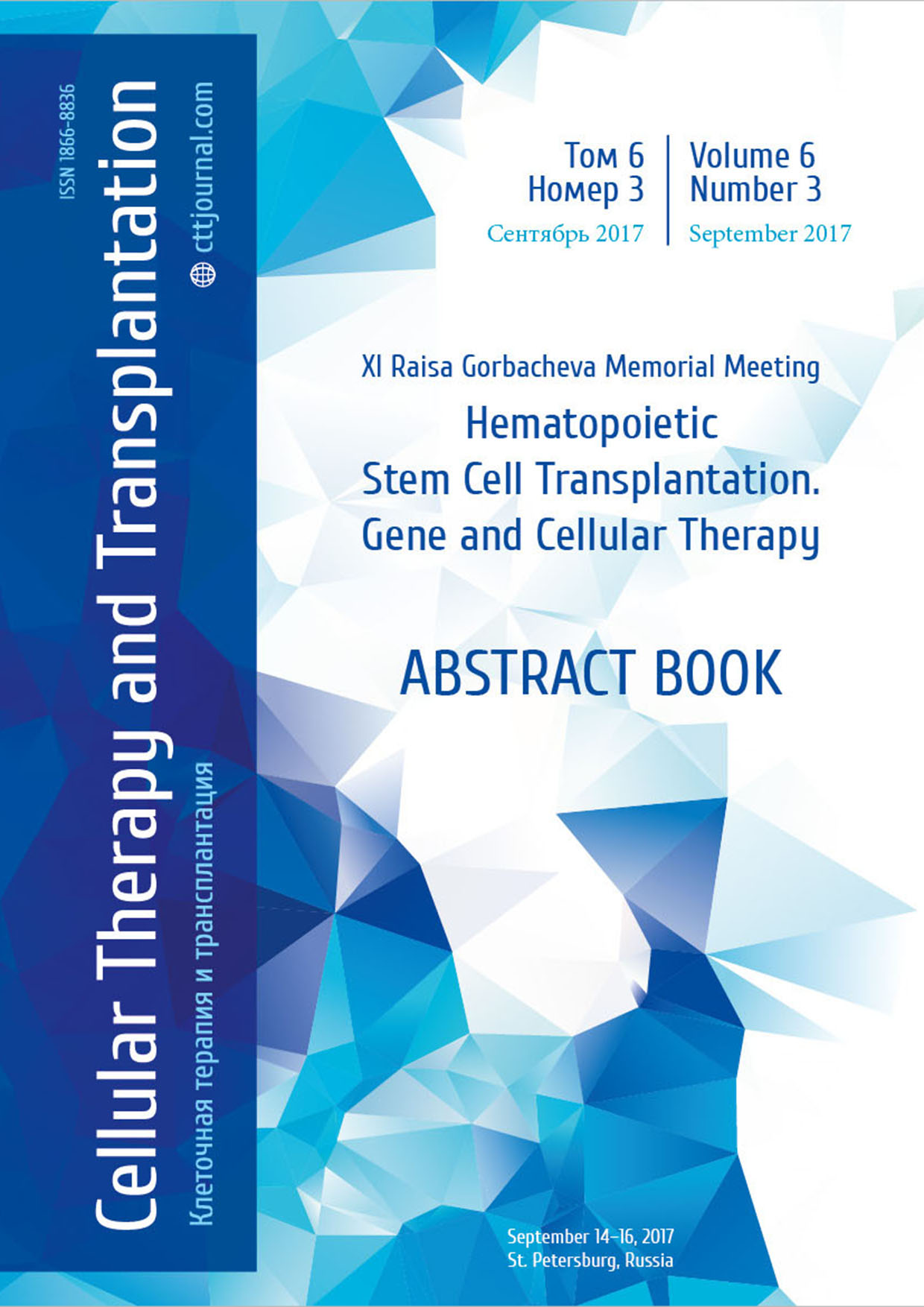Multiparametric lab-on-a-chip with multiple biophysical signal converters as a novel tool for experimental stem cell biology and control equipment for hematopoietic stem cell transplantation
Oleg V. Gradov, Arthur G. Jablokov
Laboratory of Biological Effects of Nanostructures, Talrose Institute for Energy Problems of Chemical Physics, Russian Academy of Sciences, Moscow , Russia
Summary
Introduction
The studies of stem cell differentiation on a chip which have become a trend since the middle 2000-s [1], led to a conclusion on the necessity of multiparametric studies of the cell response in such systems resulting into changes of the cell proliferation and differentiation. Several methods for electrobiophysical and cytoelecrophysiological control based on impedance or capacity measurements have been proposed elsewhere [2, 3]. The latter can be designed, in particular, in a single cell tracing mode using CMOS-chips [3], with electrophysical parameters detected as the analytical signal, instead of the optical signal typical to CMOS matrices and CCD arrays.Materials and methods
In 2012, our group already introduced CMOS-chips/CMOS-labs-on-a-chip, allowing the monitoring of histogenesis, regeneration processes and even experimental morphogenesis [4-7] using schlieren methods and speckle methods of the analytical signal detection from the sample at various irradiation and fixation angles [7, 8]. Here we propose a combination of electrophysical/electrophysiological and optical methods of the cell activity registration in a chip, in particular, using special transducers of electrophysical redox-signaling variables into the optical variables.Results and conclusions
It has been shown that cell cultures that are at different development stages or being cultured under non-similar conditions, as well as those differing by the criteria of directed differentiation, possess correlatively different sets of the response signals. Based on the data presented in this report, we demonstrate an opportunity for application of the multiparametric and converting CMOS-based labs-on-a-chip, as a useful research tool for hematopoietic stem cell transplantation studies, gene and cell therapy and related fields. The authors develop a hybrid in situ/in silico approach to this problem, based on a transition from morphological descriptors on a chip towards the diagnostic and qualimetric predictors in a special correspondence database. Planar patch-clamp on a chip (planar patch-clamp spectrometry) is considered as a possible configuration for the cell development analysis implemented in parallel to the optical registration, thus allowing to correlate the data on cell differentiation with information about functional developmental channelomics. This work was supported by RFBR (Project 16-32-00914).Keywords
Lab-on-a-chip, cytological microfluidics, diagnostic predictors, hybrid in situ/in silico approach, planar patch-clamp spectrometry, experimental morphogenesis.References
1. Ni X. F. et al. Microelectronic Engineering. 2008; 85(5):1330-1333.2. Lei K. F. et al. Biosensors and Bioelectronics. 2014; 51;16-21.
3. Prakash SB., Abshire P. Biosensors and Bioelectronics. 2008; 23(10):1449-1457.
4. Notchenko AV., Gradov OV. Zhurn Radioelectroniki. 2012; 2: 10 (In Russian)
5. Gradov OV. Notchenko AV., Morfologiya. 2012; 6 (1): 5–19. (In Ukrainian)
6. Notchenko AV, Gradov OV. Visualization, Image Processing and Computation in Biomedicine. 2013; 2 (1) DOI: 10.1615/VisualizImageProcComputatBiomed.2013005968
7. Notchenko AV, Gradov OV. Visualization, Image Processing and Computation in Biomedicine. 2013; 2(1). DOI: 10.1615/VisualizImageProcComputatBiomed.2013005967
8. Oganessian VA, Notchenko AV, Gradov OV. J. Phys. Chem.&Biophys. 2015; 5(3):P. 75.


